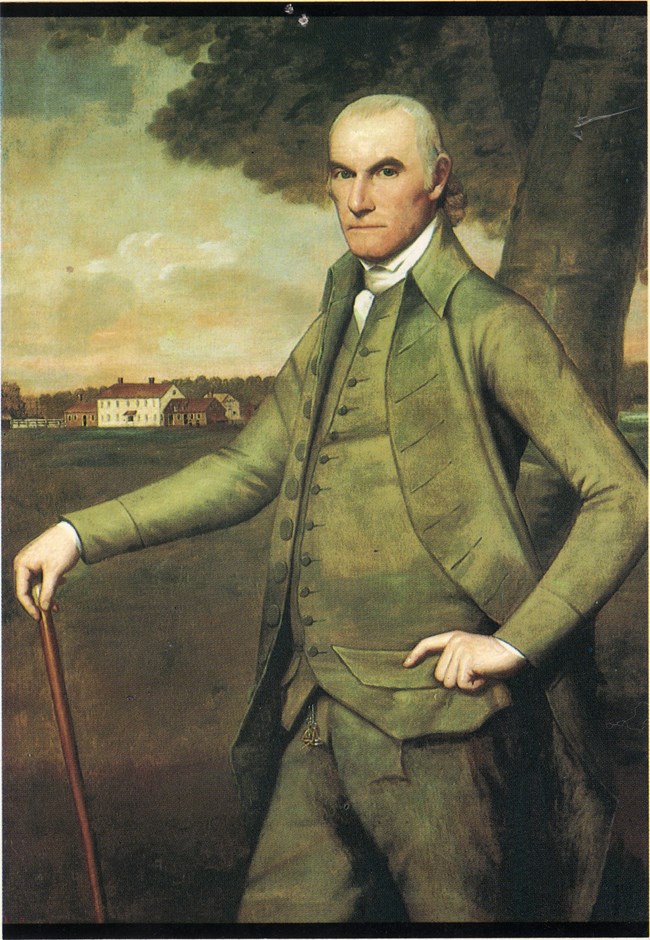Last updated: June 28, 2021
Article
The Day We Celebrate

NPS/Fire Island National Seashore
The coming July Fourth holiday reminds us that on a hot summer day in Philadelphia in July 1776, William Floyd dared to sign the Declaration of Independence. It was an act of treason against England, but an act of bravery for the future United States.
Years later, Floyd’s granddaughter Julia recalled his story about the Declaration.
"When they were about signing the paper Gen'l Floyd was talking with ---- a man of feeble frame and delicate health. The General was a man of iron nerve and of muscles to match. The man said 'Floyd if we get our necks in a noose for this - you'll kick half an hour after I'm quiet!'”
While the Declaration of Independence launched the colonies into war with England, rebellion against English rule had begun much earlier. Ten years earlier, Floyd’s grandfather and uncle were convicted of “unlawfull assembly and a Rout against the pease of sd Lord the King.” On March 15, 1766, Richard Floyd III, his son Richard, and nine other men were fined for sedition. Richard Floyd III, who was wealthy, paid the fines for all the men. Richard Woodhull, a local Magistrate to King George III, recorded his payment of 16£, roughly equivalent to $3000 today, on September 20, 1766.
As the years went by, the Fourth of July became a national holiday observed in homes and cities across the new nation. For the Floyd family, it was a day to celebrate with friends at the Old Mastic home here at the William Floyd Estate. Like many families today, they celebrated with American flags hung from the porch and windows, days at the beach, and fireworks at night. After swimming in the Great South Bay and sailing to Fire Island, July 4th dinners typically included new potatoes, fresh from the garden and roasted over a bonfire on the beach or in the pasture beyond the front lawn. Evening fireworks on the lawn were a must, and treats such as ice cream, lady fingers, and macaroons completed the festivities.
William Floyd’s great-great-granddaughter Cornelia regularly wrote about their Independence Day celebrations in her journal. On July 4, 1898, New York was in the midst of a “great fiery heat wave.” The thermostat read over 95°, and it was late in the day when a stiff breeze came in off the water to make “life bearable again,” she wrote. Windows were thrown open to cool the Old House and all within.
Cornelia wrote, “'The Day We Celebrate’ was ushered in by salvos of artillery from Cannon Crackers midst fusillades of Infantry Chinese Fire Crackers—Flags are hoisted on Lawn and from Ted’s window and from forts at Santiago (an oil can on a box much battered by crackers + explosive patriotism on the slate walk N. side.)” That year’s celebration took place while the Spanish-American War raged.
In 1905, Cornelia wrote, “July ‘Jingo Jubilee’… Jubilant Sun. heady + hot typical. To amuse Spot [our dog] who is a buzzerfly hunter Ted sends off ssizzing firecrackers over the Lawn + Spot worries the exploded + smoky ones with his teeth…”
In 1909 she recorded that the “glorious 4th” fell on Sunday, was celebrated on the 5th. Sermons were patriotic and on Monday, fireworks and swimming consumed the day”. The next year, a “great electric storm” overnight, screeching qualls, and “bright + heavy thunder” dampened the festivities. On days such as this, bridge games indoors replaced trips the beach, but ice cream and mild fireworks still made the day a celebration.
With the Fourth of July upon us, we hope you continue this tradition of celebrating with family and friends here at the William Floyd Estate. To usher in the season, we have launched a new self-guided tour of the William Floyd Estate on the official NPS app available through iTunes and Google Play. We hope you enjoy this opportunity to build your own adventure at the Estate while learning more about its history and the diverse communities of people who have lived and worked here.

NPS/Fire Island National Seashore.
